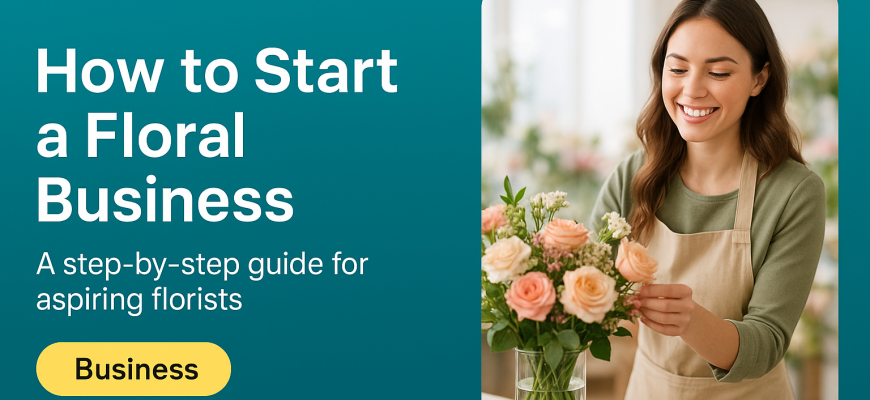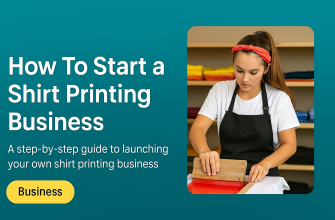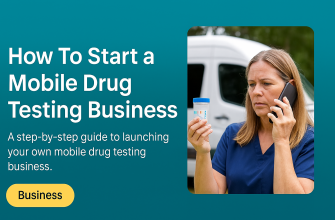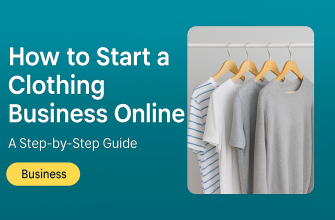Las flores tienen un poder único para embellecer y alegrar la vida de las personas. Como mujer creativa y apasionada, puedes convertir esa pasión en un negocio próspero. La industria floral estadounidense tiene un valor aproximado de 1.450 millones de dólares y sigue creciendo, con un gasto promedio de 1.830 millones de dólares en flores al año. Mejor aún, Las mujeres poseen más de 12 millones de empresas en EE. UU.Así te unirás a una sólida comunidad de emprendedoras. Ya sea que sueñes con una acogedora floristería física, una elegante boutique en línea o una combinación de ambas, los pasos para empezar son claros. A continuación, te presentamos un plan paso a paso para ayudarte. Convierte tu sueño floral en realidad.
- Paso 1: Realice una investigación de mercado y encuentre su nicho
- Paso 2: Desarrolle su plan de negocios
- Paso 3: Consigue financiación y establece tu presupuesto
- Paso 4: Elija su modelo de negocio y ubicación
- Paso 5: Gestionar aspectos legales y licencias
- Paso 6: Encontrar proveedores y gestionar el inventario
- Paso 7: Crea tu marca y configura tu tienda
- Paso 8: Construye tu equipo y tus habilidades
- Paso 9: Comercialice su negocio y planifique la gran inauguración
- Da el salto y observa cómo tu negocio florece
Paso 1: Realice una investigación de mercado y encuentre su nicho
Empiece por comprender Su mercado local y sus clientes idealesCualquier pequeña empresa exitosa comienza con una investigación exhaustiva. Averigüe quiénes en su comunidad (o mercado objetivo) compran flores y qué les gusta. Considere lo siguiente:
-
Perfil del cliente: Identifica la demografía y las preferencias florales de tu público objetivo. ¿Son organizadores de bodas, profesionales ocupados o personas que buscan el ramo perfecto?
-
Competición: Investiga las floristerías de tu zona (tanto tiendas físicas como online). ¿Qué servicios y estilos ofrecen? Busca opciones que no estén disponibles; por ejemplo, quizá ninguna se especialice en flores ecológicas o en servicios para eventos de fin de semana.
-
Tendencias y ocasiones: Manténgase al día con las tendencias florales y la demanda estacional. Por ejemplo, las bodas, el Día de San Valentín y el Día de la Madre son fechas importantes para las flores. Encuentre un nicho que le guste (como arreglos florales, ramos de novia o ramos por suscripción) que se ajuste a las necesidades del mercado.
Esta investigación dará forma a su concepto y precio, y garantizará que tenga una audiencia lista para comprar lo que ofrece.
Paso 2: Desarrolle su plan de negocios
Redacta un plan de negocios claro y conciso para mantenerte enfocado. No se trata solo de papeleo; te obliga a definir tu visión y estrategia. Tu plan debe incluir:
-
Concepto de floristería: Describe tu estilo y servicios (por ejemplo, ramos personalizados, eventos, clases).
-
Mercado objetivo: Resuma quién le comprará según su investigación.
-
Propuesta única de venta: Explique qué lo hace diferente (abastecimiento local, enfoque orgánico, diseños únicos, etc.).
-
Plan de marketing y ventas: Describe cómo atraerás clientes (redes sociales, asociaciones locales, etc.).
-
Plan financiero: Incluya los costos iniciales (alquiler o equipo, inventario inicial de flores, sitio web, marca) y una proyección de ingresos versus gastos.
Un plan sólido Orienta tus decisiones y facilita la obtención de financiación. (De hecho, sin un plan de negocios, es fácil perder el rumbo). No es necesario ser un escritor experto: incluso unas pocas páginas con viñetas claras para cada sección serán suficientes.
Paso 3: Consigue financiación y establece tu presupuesto
Determinar ¿Cuánto dinero necesitas? para lanzar y determinar de dónde vendrá. Incluso si empiezas con poco (por ejemplo, trabajando desde casa), Necesitarás algo de capital inicialPrimero, calcule sus costos esperados:
-
Costos de inicio: Flores y suministros, refrigeración (enfriadores florales), equipamiento del espacio de trabajo, herramientas (jarrones, tijeras, listones), materiales de marketing (logotipo, tarjetas de presentación, sitio web) y cualquier alquiler o renovación de la tienda. No olvide las licencias y el inventario inicial.
-
Costos de operación: Gastos mensuales como servicios públicos, combustible de entrega y compras continuas de inventario.
Una vez que tenga un presupuesto, explore las opciones de financiación:
-
Préstamos/subvenciones para pequeñas empresas: Considere préstamos de la SBA o subvenciones comunitarias para pequeñas empresas. Los programas locales para mujeres empresarias pueden ofrecer subvenciones especiales.
-
Ahorros e inversiones personales: Muchos emprendedores empiezan con ahorros personales o préstamos de familiares o amigos. Sé realista sobre lo que puedes aportar.
-
Crowdfunding o Inversores: Algunos floristas utilizan plataformas como Kickstarter o un socio silencioso para recaudar capital.
Una buena preparación financiera marcará la diferencia. Un plan y un presupuesto bien elaborados facilitan la adquisición de prestamistas o inversores y garantizan que no se quede sin efectivo.
Paso 4: Elija su modelo de negocio y ubicación
Decidir Cómo venderás tus floresLas opciones principales son:
-
Tienda física: Una tienda física permite a los clientes entrar y experimentar su marca de primera mano. Elija una ubicación con mucho tráfico peatonal y amplio estacionamiento. Asegúrese de que haya suficiente espacio para una zona de exhibición, un espacio de trabajo de diseño y almacenamiento. Una distribución bien organizada mejorará el flujo de trabajo y la experiencia del cliente.
-
Negocio desde casa o en estudio: Empezar desde casa o con un pequeño estudio puede ahorrarte el alquiler. Esto es común entre los floristas creativos que buscan bajos gastos generales. (Consejo: Dedica una habitación o garaje exclusivamente a las flores para que tu trabajo no ocupe demasiado espacio). Seguirás encargándote de todo, desde el marketing hasta la entrega, así que planifica tu tiempo con cuidado.
-
Tienda floral online: Vender en línea ofrece flexibilidad. Puedes llegar a tus clientes a través de un sitio web o plataformas como Etsy. Sin embargo, asegúrate de tener suficiente espacio de almacenamiento para el inventario y un plan de entrega o envío confiable. Recuerda que el envío de flores es un mercado en auge (especialmente para eventos y festividades).
Muchas floristerías combinan ambas: una tienda física con presencia online. Elige lo que se ajuste a tu presupuesto y estilo de vida. Sea cual sea el modelo que elijas, haz una lista de requisitos: si tienes una tienda física, revisa las condiciones del contrato de arrendamiento; si tienes presencia online, investiga las plataformas de comercio electrónico y los materiales de embalaje.
Paso 5: Gestionar aspectos legales y licencias
Antes del día de apertura, Hazlo todo oficialNecesitarás:
-
Registre su empresa: Elija un nombre comercial y una estructura legal (empresa unipersonal, LLC, etc.) y presente la documentación en su estado. Solicite un Número de Identificación de Empleador (EIN) del IRS para contratar empleados y gestionar los impuestos.
-
Permisos y licencias locales: Obtenga una licencia comercial general de su ciudad o condado. Probablemente necesitará un certificado de reventa (permiso de impuesto sobre las ventas) si vende flores directamente a los consumidores. Algunos municipios exigen un permiso para el rótulo de su tienda, o un permiso sanitario si mezcla flores con alimentos. Consulte con su ayuntamiento o con un asesor de pequeñas empresas.
-
Seguro: Proteja su tienda y a usted mismo. Se recomienda un seguro de responsabilidad civil general y, posiblemente, un seguro de propiedad para equipos costosos. (Si trabaja desde casa, verifique si su seguro de hogar cubre la actividad comercial o si necesita una cobertura aparte).
-
Asesoramiento profesional: Cada estado tiene diferentes reglas. Administración de Pequeñas Empresas de los Estados Unidos (SBA) Es un excelente recurso con guías paso a paso sobre licencias y permisos. En caso de duda, consulte con un Centro de Desarrollo de Pequeñas Empresas o un abogado local para asegurarse de cumplir con la normativa.
Atender estos detalles con anticipación evita dolores de cabeza más adelante. Una vez que su negocio esté debidamente registrado y asegurado, podrá concentrarse plenamente en su crecimiento.
Paso 6: Encontrar proveedores y gestionar el inventario
El corazón de tu tienda son sus flores. Encuentre proveedores confiables y desarrollar una buena cadena de suministro:
-
Proveedores mayoristas de flores: Investigue a los mayoristas de flores que venden flores al por mayor a empresas. A menudo, estos proveedores ofrecen entregas semanales de flores frescas. Compare precios, plazos de entrega y condiciones de crédito. Los proveedores confiables pueden determinar su disponibilidad de flores frescas.
-
Productores y mercados locales: Considere granjas locales o mercados agrícolas para flores especiales o de temporada. El abastecimiento local puede reducir los costos de envío y atraer a clientes que prefieren las plantas cultivadas localmente.
-
Suministros adicionales: No olvides los artículos de uso diario: jarrones, cintas, espuma floral, papel de regalo y materiales de cuidado (alimento para flores, conservantes). Abre cuentas con proveedores de papel y regalos con anticipación para tener listos los materiales de marca (tarjetas de presentación, folletos) para el día de la inauguración.
Consejo de inventario: Empieza con moderación. Si no estás seguro de la rapidez con la que venderás, pide cantidades más pequeñas al principio. Lleva un registro de los arreglos florales y las flores que se venden rápido y las que se quedan en los estantes. Con el tiempo, aprenderás a gestionar el inventario (por ejemplo, más rosas rojas antes de San Valentín) y podrás ajustar tus pedidos en consecuencia.
Paso 7: Crea tu marca y configura tu tienda
Ahora dale vida a tu marca y monta un espacio de tienda:
-
Diseño de marca y tienda: Desarrolla una imagen cohesiva para tu negocio. Elige un nombre, un logotipo y una paleta de colores memorables que reflejen tu estilo (moderno, vintage, verde exuberante, etc.). Aplica esta imagen de marca a tu escaparate, sitio web y materiales de marketing. En una tienda física, organiza los expositores y una entrada atractiva. Mantén los expositores frescos y acordes con la temática (por ejemplo, rota los arreglos florales en el escaparate para captar la atención). Si trabajas en línea, diseña un sitio web intuitivo y utiliza fotos de alta calidad de tus arreglos.
-
Experiencia del cliente: Facilite a los clientes la exploración y compra. En una tienda física, coloque una caja accesible y despeje los pasillos. En línea, asegúrese de que la navegación en su sitio web sea sencilla y que añadir productos al carrito sea fácil. Una buena presentación fomenta las ventas.
-
Equipamiento y herramientas: Asegúrese de invertir en artículos esenciales que faciliten su trabajo, incluyendo un sistema POS para procesar las ventas y gestionar el inventario, opciones de refrigeración para mantener la frescura de las flores, mesas resistentes para arreglos florales y las herramientas necesarias como tijeras, cuchillos, cubos y jarrones. También es importante contar con equipo de oficina, como una computadora y una impresora, para gestionar pedidos, etiquetas y papeleo.
Dedique tiempo a este paso: un espacio bien organizado y con una buena imagen de marca (físico o digital) marcará el tono de su negocio y hará que los clientes sientan que están en un establecimiento profesional.
Paso 8: Construye tu equipo y tus habilidades
Incluso si empiezas solo, piensa en el lado humano de tu negocio:
-
Dotación de personal: Muchos floristas empiezan solos, pero pronto buscan ayuda. Contrate diseñadores florales experimentados o asistentes junior según sea necesario. El personal cualificado puede gestionar horarios de trabajo concurridos o pedidos para eventos grandes. Si contrata, planifique... capacitaciónEnseñe su estilo y estándares de servicio al cliente para que cada ramo coincida con su visión.
-
Roles y operaciones: Define quién se encarga de qué: por ejemplo, quién contesta el teléfono, prepara los pedidos o mantiene el sitio web. Si no contratas personal, podrías subcontratar repartidores o un contable a tiempo parcial.
-
Atención al cliente: Priorice la excelencia en el servicio. Las interacciones amables y profesionales le fidelizarán a sus clientes. Capacite a todos (incluyéndose a usted mismo) para que atiendan consultas, solicitudes especiales e incluso quejas con amabilidad. Recuerde: como indica una guía de Homebase: «Establezca estándares de servicio al cliente para garantizar una experiencia consistente y positiva».
Contar con el equipo adecuado, incluso si es pequeño, y un enfoque en la calidad y el servicio ayudará a que su tienda brille.
Paso 9: Comercialice su negocio y planifique la gran inauguración
Con todo en su lugar, es hora de Haz correr la voz y abre tus puertas con un estallido:
-
Plan de marketing: Antes de abrir, desarrolla un plan de marketing. Usa las redes sociales para generar interés: Instagram y Facebook son ideales para mostrar tus diseños florales. Publica fotos y adelantos del detrás de cámaras para atraer seguidores. Dado que el envío de flores es cada vez más popular (sobre todo en San Valentín y el Día de la Madre), empieza a promocionarlo con antelación para estas temporadas altas.
-
Publicidad local: No subestime el marketing local tradicional. Distribuya folletos o postales en el barrio, anuncie en boletines informativos comunitarios o patrocine un evento local. Colabore con negocios cercanos (cafeterías, boutiques, organizadores de bodas) para realizar promociones cruzadas.
-
Gran evento de inauguración: Organiza una celebración de inauguración. Ofrece un descuento especial o un pequeño ramo de flores gratis a las primeras clientas. Colabora con otros negocios propiedad de mujeres (por ejemplo, una pastelería o una boutique) para organizar un evento conjunto: esto atrae a más gente y fomenta la buena voluntad en la comunidad. Asegúrate de que tu tienda luzca festiva con flores frescas y una señalización clara.
-
Marca consistente: Asegúrate de que todo tu marketing sea coherente y acorde con tu marca. Usa los mismos colores, logotipos y mensajes para que te reconozcan en todas partes.
Al generar expectación y una buena primera impresión, empezarás a conseguir clientes haciendo cola. Como aconseja la guía de Homebase, la mensajería unificada y el marketing preapertura pueden hacer que los clientes hagan cola el día de la inauguración.
Da el salto y observa cómo tu negocio florece
Ya tienes una hoja de ruta para iniciar tu negocio floral. Recuerda, Todo gran sueño comienza con un primer pasoEmpieza de forma manejable; por ejemplo, céntrate inicialmente en un área de entrega pequeña o en una sola línea de productos, y luego amplíala conforme ganes experiencia. Cada éxito te dará la confianza para dar el siguiente paso. Mantén la flexibilidad: aprende de los primeros comentarios, adapta tu plan y mantén viva tu pasión.
Dirigir una floristería combina creatividad y emprendimiento, y muchas mujeres han encontrado gran satisfacción y éxito en este campo. Con tu visión, planificación y trabajo duro, puedes crear algo verdaderamente especial. El mundo necesita la belleza que ofreces, así que... dar ese saltoCultiva tus habilidades y tu negocio como si fuera un jardín, y crecerá. Mucha suerte en este emocionante camino, y recuerda: puedes lograrlo, y al hacerlo, ayudarás a que la vida de las personas sea más hermosa cada día.









